LIVE ART: Two Filmmakers Capture Life-Changing Theater Education in a Crowd-Funded Documentary
SPARC's LIVE ART combines two brilliant and ambitious ideas: to create "a 20-week inclusive performing arts educational experience for children with and without developmental disabilities and hearing impairment," culminating "with these students performing on stage alongside some of Virginia's best professional musicians"; and to bring in a skeleton film crew to document not just the event itself, but the entire 5-month teaching, development, and rehearsal process in a documentary that is now being crowd-funded to completion.
Becoming Part of the LIVE ART Team
Part of the challenge of this project for Montgomery and Gaff was that neither had previously produced a full-length documentary, so the skills they drew on had to be adapted from their experience in other areas—Montgomery as a producer of wedding and event work and story-centric sports promo films, and Gaff from his interview-driven event films and his background as a documentary film editor. "I don't think anything really prepares you for immersing yourself in a world and trying to find stories," Gaff says.
But Montgomery maintains that the nature of their backgrounds and the modesty of their approach and equipment—both necessitated by their event work—proved a real asset as they moved through the LIVE ART teaching environment and built relationships with their subjects.
Montgomery describes his work in the event field, as well as the college sports promo films he and Gaff have produced with fellow Richmond-area filmmaker Scott Strimple over the last three years as "little documentaries," and says, "Basically, the same approach that I would do for that, I applied to this full-blown documentary. What I learned by shooting weddings and other stories, I applied to the big project that Bill and I encountered with LIVE ART."
SPARC too saw the advantage of working with filmmakers schooled in smaller films, because it made it easier for them to work in the midst of LIVE ART without overtaking it. "One reason why SPARC chose to go with myself and Bill was making sure that it wasn't this big crew that's going in," Montgomery says. "They wanted to make sure that these kids would not shy away from the camera or be distracted from what they're supposed to learn in the classroom. And so they love the fact that we'd walk in with one small DSLR camera and a Zoom H4n handheld audio recorder and a little boom mic and just be a part of the team," he recalls. "From day one, they announced, ‘This is Martin and Bill. They're part of the SPARC LIVE ART staff,' and they never questioned why we were there."
One thing Montgomery and Gaff knew from the outset was that they needed the kids to be comfortable around them, and fortunately "it happened pretty quickly," Gaff says. "Within two or three weeks the kids were goofing with us, and not afraid of the camera. We sort of immersed ourselves in a world and tried to keep it low-key and make people comfortable with being themselves around us. It definitely paid off in this situation."
What We Can Do . . . a LIVE ART excerpt from Martin Montgomery on Vimeo.
Filming LIVE ART On Stage
Even though the LIVE ART documentary was produced from the outset as much more than a document of the performance, capturing LIVE ART as it was performed onstage on June 3 was an essential part of the film. Not surprisingly, it also required a much larger crew than the production up to that point—though not as large as you might think.
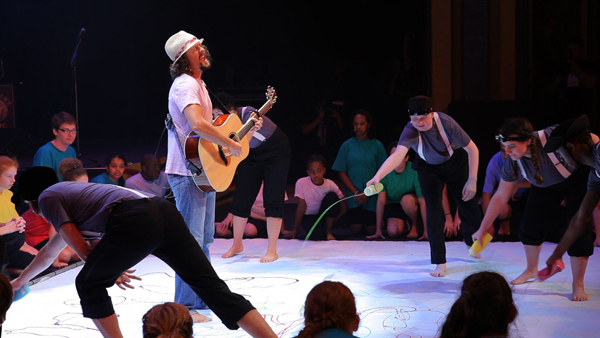
Grammy winner Jason Mraz performing as part of the LIVE ART ensemble
To capture the performance, the crew actually shot 2 dress rehearsals in addition to the show itself. The crew consisted of 6 camera operators to capture the performance, along with an audio tech, with Mongtomery shooting and directing the crew. Meanwhile, Gaff spent the show (and the rehearsals) backstage capturing interviews and "behind the scenes stuff." With six cameras rolling, Gaff says, "we had many, many angles, but we were also trying not to make light of the stories that were happening behind the scenes too, which were very interesting." Backstage during the rehearsals, Gaff recalls, "We were trying to figure out, ‘Where is the emotion happening? Who's likely to be nervous beforehand or who are they going to run to when they walk offstage?'"
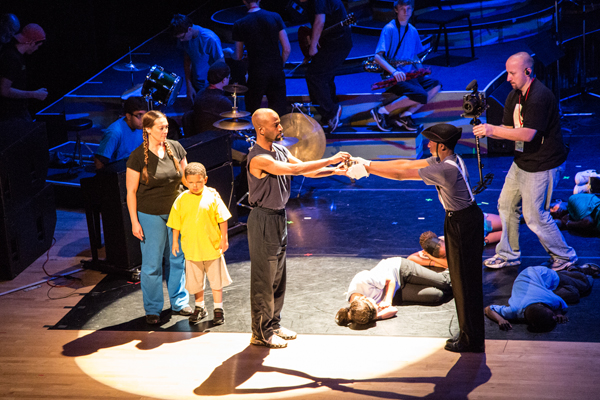
Martin Montgomery filming onstage with the LIVE ART cast
The most unusual part of the production—although it was quite consistent with the role the crew had played in LIVE ART from the outset—was that the part of the camera crew was onstage throughout the show, moving as unobtrusively as possible among the performers. Shooting the rehearsals was critical for ensuring that members of the camera crew could work from the stage without interfering with the performance. "We wanted to capture in a really nice way what was happening on stage without totally interfering with it. So during the dress rehearsals, when they're actually in costume, we would shoot with steadicams and sliders and move around and stuff like that, but when the actual show happened we were all on tripods or monopods."
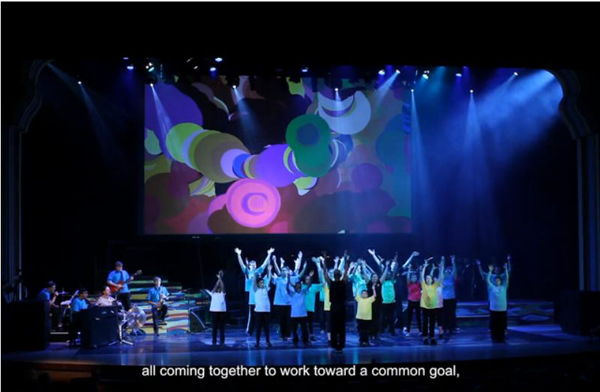
"It didn't take much," Montgomery says, "but I convinced the people of LIVE ART to allow cameramen to be onstage. And so we were wearing SPARC LIVE ART shirts and we were just shooting on a monopod. There was one person stage left, one person stage right. Audience members could see us. But we basically kind of came across as part of the team, as part of what's going on onstage."
So with a crew of 7, Gaff says, "It was a little bit bigger, but it wasn't like you'd expect for a concert. We didn't have cranes and stuff like that, even if it looks like we did. It wasn't ever that big, but by having a lot of cameras around we got some of the effect of that."
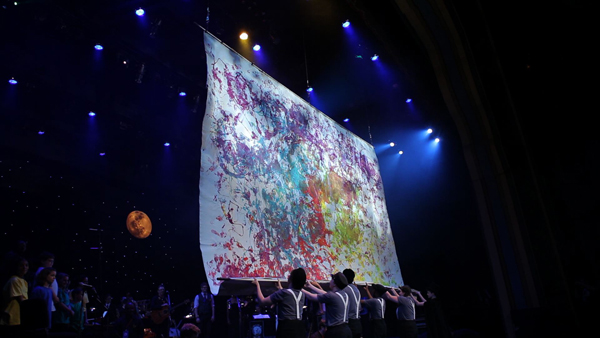
They did all their performance shooting on DSLRs, which might be considered a risky move because of the continuous recording time limitations of the cameras, but Montgomery and Gaff considered it an aesthetic necessity. "We wanted to shoot the event with DSLRs so it would look similar to the documentary footage," Montgomery explains. "I wanted to get that same intimate feeling when the big event was happening onstage."
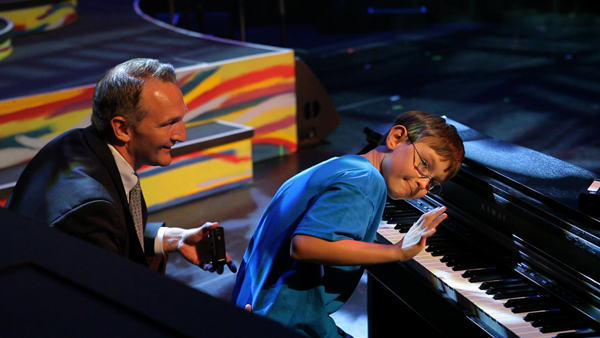
Gaff adds that they didn't approach the event with the expectation of shooting the full performance as in a conventional concert shoot. "We were sticking to the stories that we were focusing on" throughout the documentary. This made Montgomery's role directing the other shooters an especially critical one. "Martin and I were really the only ones who really knew the stories," Gaff says. "The other shooters hadn't been shooting with us all along, so they didn't have a really good grasp on who was who and stuff like that yet. So Martin was calling the shots and trying to make the shots."
LIVE ART - Tech Demo from Martin Montgomery on Vimeo.
Related Articles
For Altair and humanstory, the name of the game in college sports web shows is storytelling, and their theme-driven style is getting them lucrative gigs with top college programs.